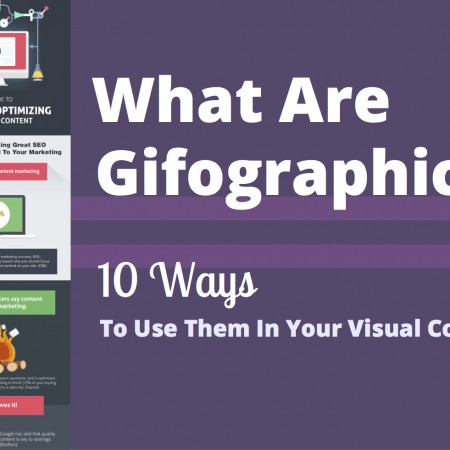A 5-Step Guide on How to Accurately Research Your Online Content
Anyone who has ever dabbled in the online content marketing community knows that research is everything. Shoddy research means that you wind up with shoddy facts, which can cost you readers and your voice of authority – and you don’t want that to happen, if you’re investing anything in content marketing. Unfortunately, many people don’t know how to research correctly in our current web-based world, and many online writers today are finding that the research tactics they learned in the public school library aren’t holding true anymore. Fortunately, writers who know how to research well, find great sources, and use technology for content evaluation are well on their way to accessing the best information on the web. Read our best practices for researching your content below. 5 Major Research Tips for the Online Content Creator (In a Digital World) Here are our top tips on researching correctly in today’s modern world. 1. Look for these 5 elements of reputable online content No matter what topic you’re researching, it’s important to evaluate every source you’re interested in on the basis of the 5 elements of reputable online content. This is an idea that was first put forth by Darren Rowse of Problogger and the 5 elements are as follows: Insight: Does the article, blog, or website make you think of simple ideas in a simple manner but from a new perspective? If it does, it’s gifted you with new levels of insight into the topic, which means that it’s probably a source worth mentioning. To put this another way, good sources should provide unique insight to their readers. If they’re not, it’s likely that the writer isn’t working hard enough to produce that “Aha!” moment. Simplicity: Unless you’re reading a high-level specialty blog, all of the information contained within any source you’re interested in should be presented in an easy-to-understand manner. This helps ensure that you’re interpreting the facts correctly and ensures that the source will be as valuable for your readers as it is for you. Depth: In addition to being simply written, great sources possess the level of depth needed to adequately cover a given topic. This means extensive topics should be broken down into bite-sized chunks and that simple topics shouldn’t be beaten to death by the writer. For example, you wouldn’t want to see a 500-word summary of the Civil War any more than you would want to see a 10,000-word article on the best way to polish a shoe. Great online content should be as deep as the topic requires it to be – no more and no less. Breadth: Breadth is the extent to which the writer of a blog, article, or site manages to link the topic discussed with other relatable topics. Breadth often includes things like storytelling (using examples to illustrate points), references (referencing experts or industry leaders to help add detail to an explanation), and using analogies to help readers understand a topic. Sources that contain a high level of breadth are generally reputable sources that you will do well to link to and draw statistics from. Relevance: If there’s only one piece of the entire article that’s relevant to the topic you’re researching, it’s likely that you’re better off finding a more focused source. This saves you from gathering bad facts from unknowledgeable sources and ensures that the leaders you’re referencing are actually leaders. If you’re having a difficult time returning relevant search results during your quest for information, try changing the keyword phrases you’re using in Google or searching the blogs of industry influencers who work within the niche you’re researching. This can often help you turn up facts and sources that were previously eluding you. While these five elements won’t tell you everything you need to know about a potential source, they’re generally a pretty reliable marker of what’s quality and what’s not in the world of online content. 2. Stick with the top results You know how smart Google is these days, right? When Google ranks pages, it ranks the most authoritative pages on a topic highest up in the SERPs. In light of this, it’s possible that you’ll run into low-quality content or content that’s lacking enough E-A-T (expertise, authoritativeness, and trustworthiness) if you start digging back into the subsequent pages of a search result. (More on the EAT and YMYL stuff in my monster blog post on Google’s SERP guidelines.) If you can’t find ample results to match your chosen query, consider entering a different query. 27,000,000 pieces of online content are currently shared around the web on a daily basis so the problem is very seldom a lack of answers and more commonly an off-base search technique. 3. Go to the best sources If you write often, it’s likely that you’ve developed a series of sources you trust and turn to on a regular basis for statistics. For us, these statistics may include leaders like Moz, HubSpot, BuzzSumo, and Content Marketing Institute. Those are just a few I’ve cited for our own industry. In addition to being the big names in this industry, these sources also have entire research teams behind them to write their content, which means that the facts you find on their sites have likely been checked and re-checked before publication. Know who is the research standard company is in your industry, when you’re researching your content. If you dig down deep as you research, you’ll get final sources for facts – look at domains for anything that comes from a large company doing their own study, educational institution, etc. This immediately makes these sites much more credible than an individual blog that’s written by someone who doesn’t have to go through rigorous fact-checking in order to publish a piece. For this reason, information that comes from large, established companies is generally much safer to rely on than the information that comes from independent writers. With this in mind, it’s wise to build your own list of trusted sources you know you … Read more









